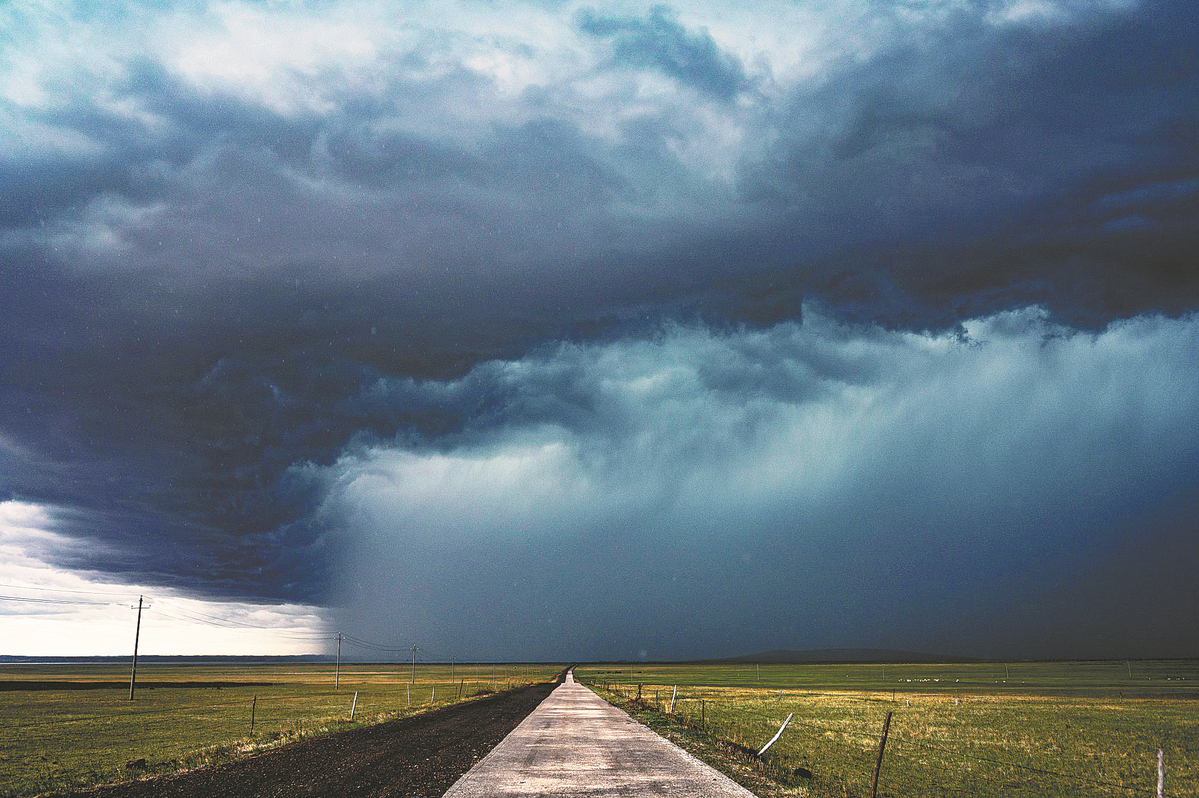

Only 10 hours remained before Typhoon Muifa was due to make landfall in eastern China. Su Dike and his teammates decided to head to Zhoushan, Zhejiang province, from Ningbo to "encounter" the storm.
Their car hadn't been on the road long before they encountered tire trouble and they had to immediately rent a car and move their equipment in the rainstorm. They finally made it to Zhoushan and found a good position to record the typhoon.
There were few people or cars on the road when they witnessed trees falling down under the force of strong winds and street lamps blinking out in the heavy rain. After some 10 minutes, the rain suddenly became lighter and the wind turned softer, meaning that they were now in the eye of the typhoon.
"While chasing the storm, we collected a lot of data that can reflect the microscopic characteristics of typhoons. We hope the information can help people to better understand such storms," Su says in his video, recording this thrilling trip.
"People may think we — storm chasers — are looking for excitement, but we actually shoulder the responsibility for each chase, as we need to get to the deepest point of a storm to get first-hand data that will help us to deal with future (climate) change," he explains.
In the past three years, the 21-year-old and his fellow storm chasers have visited over a dozen provinces, including Heilongjiang, Shandong and Jilin, racking up a total distance of over 30,000 kilometers.
For them, most natural events — a storm, clouds, sunset, a rainbow, lightning, hail or solar corona — provide their own reward. In addition to storms and strong convection, they chase the first snow, cold snaps, floods and dust storms.
As a senior student at Communication University of China, majoring in photography, Su has used almost all of his spare time chasing the wind. He is also a popular meteorological science video blogger on Bilibili, a video-sharing platform popular with young Chinese. He posts videos of his storm-chasing adventures and uses them to try and popularize climate science.